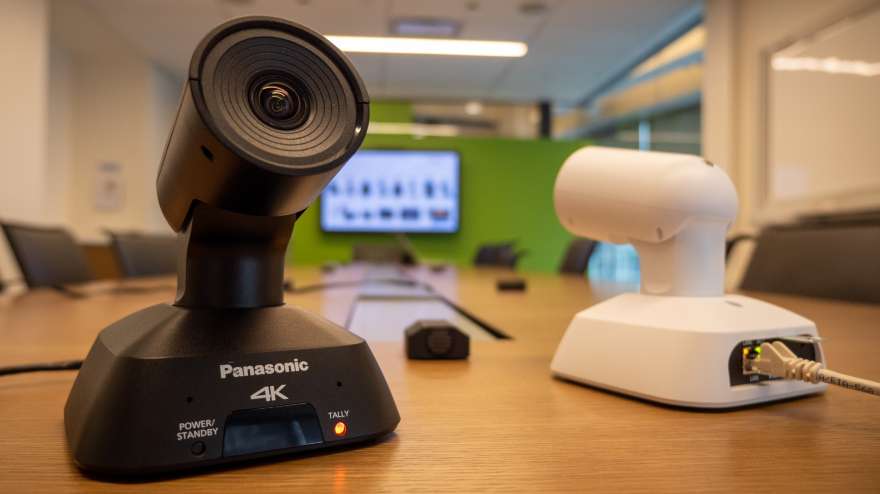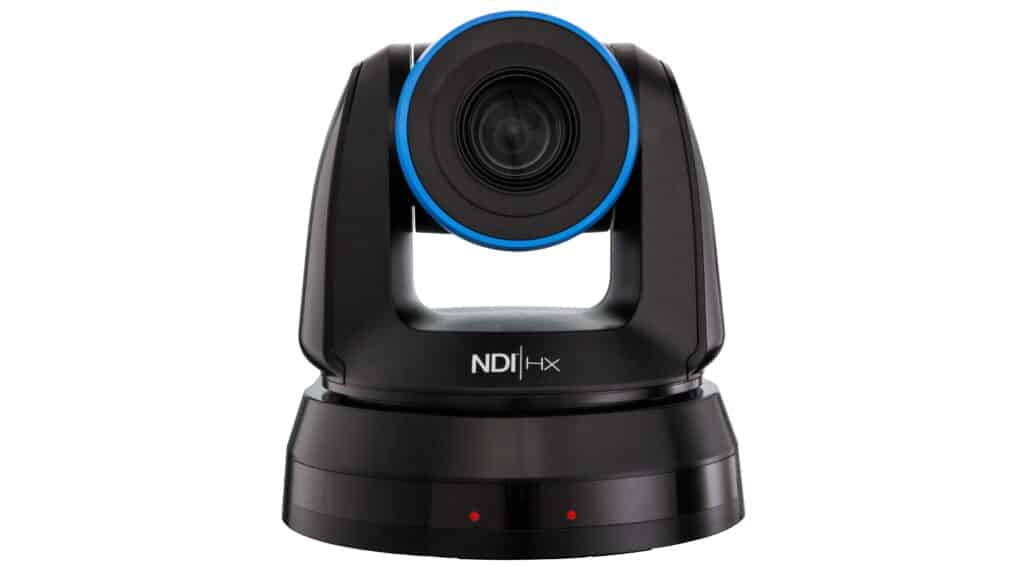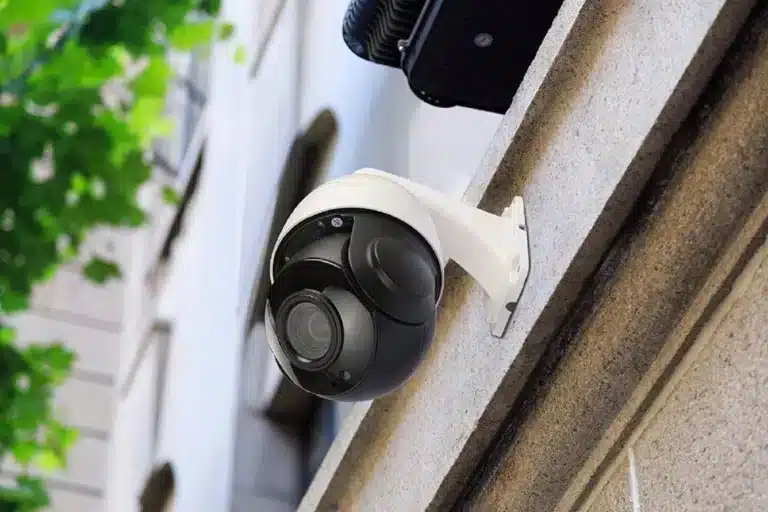Introduction
How To Control PTZ Camera With PC: Using a PC to control a PTZ camera has several benefits over the old ways of doing things. It lets users precisely move the camera, so they can change its position, tilt it up or down, and zoom in or out from a distance. This gives you a lot of options, which is helpful when you need to put the camera somewhere hard to reach or high up. By using a PC, workers can quickly change how the camera moves with a few keystrokes or clicks on the mouse.
To handle a PTZ camera, you need software or apps on your PC. The live video feed from the camera and tools for moving are shown in the GUIs of these apps. RS-485, RS-232, or IP-based standards like ONVIF let the camera and software talk to each other so that merging and operation go smoothly.
Once the necessary software is installed on the PC, connecting the PTZ camera is the next step. This can typically be achieved through a wired connection using Ethernet or serial cables, or in some cases, wirelessly via Wi-Fi or Bluetooth, depending on the camera model and available connectivity options. The software will typically users through the camera setup process, enabling them to configure parameters such as camera address, communication settings, and control options.

How do I remotely control my PTZ camera?
With the help of cloud-based software such as Zoom, you can also control a PTZ camera remotely. By using Zoom, users can take advantage of the “Remote PTZ Control” features which can be enabled on professional accounts. This feature provides pan, tilt and zoom controls for remote users with the Zoom Meeting client.
Choose the Right PTZ Camera: Choose a remote-controlled PTZ camera. Most current PTZ cameras include this feature, however check the camera’s specs and compatibility with remote control software.
Set up the Camera: Position the PTZ camera to see or record the area. Remote camera control needs network and connection setup and camera power. This involves connecting the camera to your network through Ethernet, Wi-Fi, or Bluetooth, depending on its capabilities.
Installation: To control your PTZ camera from afar, you need to install software or apps on your PC or mobile device. Different camera makers and apps offer different software. Some cameras come with their own software, while others support ONVIF, which means they can work with a lot of other apps.
Connect to the PTZ Camera:Start up the software or app for the remote control on your computer or phone. Use the IP address, camera details (username and password), or any unique setup directions given by the maker to connect to the PTZ camera.
How do I control my PTZ camera with keyboard?
Use Keyboard Hotkeys to Control PTZ Cameras
- Pressing Ctrl+1, Ctrl2, Ctrl+3, or Ctrl+4, or Ctrl+5 button combination allows to switch between active Port Numbers.
- Pressing Ctrl+J button combination will Set Current Preset.
- Pressing Ctrl+~ button combination is to recall Home position.
- Button “M” is for Manual Focus.
Make sure your PTZ camera supports keyboard control before using it. Most PTZ cameras include this capability, however consult the camera’s manual and specs to ensure compatibility.
PTZ cameras must be properly connected to computers and control interfaces. Depending on the camera, this entails connection through USB, Ethernet, RS-232, or RS-485. Refer to the camera’s user manual or manufacturer’s instructions for connection.
PTZ control software must be installed on your computer to operate the PTZ camera using your keyboard. A third-party vendor or the camera manufacturer may give the software. Check if the program supports keyboard control and your camera model.
Launch PTZ control software and go to settings or options. Configure keyboard shortcuts or instructions. Set keys or key combinations to control camera motions like pan, tilt, and zoom in this area.
Can you control PTZ camera through USB?
The PTZOptics camera control application controls pan, tilt, zoom cameras connected via IP and USB and provides maximum flexibility for video productions. The application is continuously updated to include advanced features such as panoramic preset image mapping, Xbox joystick control, and keyboard shortcuts.
Many PTZ cameras provide serial control and setup interfaces. USB to RS-232 or USB to RS-485 adapters link PTZ cameras to computers’ USB ports. The converter bridges USB signals to serial communication signals the PTZ camera can recognize. Through the USB connection, you may operate the camera’s pan, tilt, and zoom with specialist software or apps.
USB control modules are available for several PTZ cameras. These modules often attach directly to the camera’s communication connection and provide USB control. Connecting the USB control module to your computer’s USB port lets you remotely control the camera’s motions using appropriate software. This removes the requirement for a USB-to-serial converter.
Many modern PTZ cameras offer IP network control and programming. IP controls PTZ cameras, but USB powers and transports data. Remotely control PTZ camera movements and settings using their IP address on your computer’s web browser or control software.
How do I find the IP address of my PTZ camera?
Using Network Scanners
Checking the Network tab of the software for the CCTV camera is the quickest and simplest approach to locate the IP address of the security camera (mobile app or PC client). The network panel displays all camera IP address information.
Start with the camera’s handbook or technical literature. The handbook may provide the IP address and other network details. Look for a network setup, connection, or configuration component. The camera’s IP address may be there.
Many PTZ cameras come with manufacturer-provided software. Install and run the application on your PC or tablet with your PTZ camera on the same network. It should include network cameras’ IP addresses, model names, and other information.
Visit your router’s configuration page for your PTZ camera’s IP address. Enter the router’s default gateway in a browser. This is generally “192.168.1.1” or “192.168.0.1.” Enter the router’s admin interface and choose connected devices or DHCP clients. Your PTZ camera’s IP should be mentioned.
Network scanning tools can detect IP addresses allocated to network devices. Advanced IP Scanner, Fing, and Angry IP Scanner can scan your network and identify connected devices with IP addresses.

Do I need a controller for a PTZ camera?
Panasonic PRO PTZ cameras come standard with the ability to control camera settings and movements directly through a web browser or via free PC software. However, in most cases, professional multi-camera production for streaming, broadcast or IMAG video will require a dedicated hardware controller.
The PTZ camera’s motions may be controlled intuitively and precisely by a controller. Users may precisely pan and tilt the camera using joysticks, knobs, or buttons on the controller to concentrate on the topic. Applications that demand particular shots or monitoring moving objects benefit from this degree of control.
A dedicated PTZ camera controller removes the need for sophisticated keyboard keys and software interfaces. A controller lets users quickly alter camera motions, zoom levels, and other settings, saving time and effort.
PTZ camera controllers are ergonomically designed for ease of usage. Even after hours, buttons, joysticks, and knobs make camera motion control easy. This design boosts productivity and reduces errors.
PTZ camera controllers typically have several functionalities. Set and locations, create camera tours or patterns, change focus or exposure, and communicate with other devices or systems.
Can a PTZ camera follow motion?
Auto-tracking, basing on video analysis technology, is an advanced function of PTZ cameras that enables a single PTZ camera to cover a large area and to automatically detect, follow and record video of moving objects such as humans or vehicles.
Motion detection is in PTZ cameras. These cameras detect field-of-view changes using motion sensors or powerful video analytics. Camera pan, tilt, and zoom automatically track action. This is essential in surveillance situations when the camera must ignore extraneous activities and concentrate on certain locations.
Some PTZ cameras can automatically track moving objects in their range of view. Auto tracking systems scan video frames in real time to track objects depending on their movement. The camera centers identified items by panning, tilting, and zooming. Sports where the camera must follow the action benefit from this capability.
Advanced PTZ cameras may use AI and machine learning algorithms for intelligent tracking. These cameras can identify and monitor objects and people based on size, color, or activity using video data. Intelligent tracking lets the camera concentrate on specific targets in complicated and busy surroundings, reducing false alarms.
Do PTZ cameras work only with Internet?
If IP cameras, despite the moniker “Internet Protocol,” do not need a live Internet connection, how to power a PTZ Camera then? Having access to a LAN is all that’s needed. For example, you might connect your IP camera to your computer’s Ethernet connection to create a very simple version of this LAN.
PTZ cameras connect to a local network using Ethernet or Wi-Fi. It allows the camera to communicate with network devices without an internet connection. This solution provides local PTZ camera control inside the network for instances when remote access is not possible.
PTZ cameras may link to computers or control systems through RS-232 or RS-485. Internet connections are eliminated by connecting the camera directly to the controller. Local apps may directly operate and monitor PTZ cameras.
PTZ cameras often include control panels and joysticks. Camera control panels with cables reduce internet need. Control panel or joystick pan, tilt, and zoom controls allow camera movements without internet.
Independent Operation: PTZ cameras may function without connectivity. This mode allows manual camera motion control using the camera’s controls or a system.
How do I add PTZ control to OBS?
Add the PTZ Optics camera to OBS Studio:
- Click “+” under the Sources menu at the bottom of the page and select “Media Source”
- Select “Create new” then replace the words “Media Source” with “TribuCast” plus the IP address of your camera.
- Click “OK” and on the next page Deselect “Local File”
Configure PTZ Plugin: Once the PTZ plugin is installed, you need to configure it to communicate with your PTZ camera. In OBS, go to the “Tools” menu, select “PTZOptics Controller,” and then click on “Open PTZOptics Controller.” This will open the PTZOptics Controller interface within OBS.
Connect PTZ Camera: In the PTZOptics Controller interface, click on the “Device” dropdown menu and select your PTZ camera. If your camera supports multiple protocols, select the appropriate one for your camera model.
Configure PTZ Camera Settings: Set the PTZ camera to your needs. This may comprise the camera’s IP address, port number, username, password, and other connection details.
Set Up PTZ Controls in OBS: After configuring the PTZ camera settings, you can set up PTZ controls within OBS. In the PTZOptics Controller interface, click on the “PTZ Controls” tab. Here, you can add on-screen PTZ controls, joystick controls, or assign hotkeys for camera movements.
Test PTZ Control: After setting up PTZ controls, test them. Control the camera’s pan, tilt, and zoom via on-screen controls or hotkeys. Check the camera’s response.

Conclusion
PTZ cams that work with PCs make managing cameras simple and strong. With the right software and an easy-to-use interface, users can spin, twist, and zoom the camera from a distance to record full video from different angles. Unlike regular control systems, this technology lets you move cameras accurately and use cameras that are hard to get to.
By leveraging the capabilities of PC software, users can access advanced features like preset positions, scheduling camera movements, and integration with security camera other devices and systems. This opens up a wide range of possibilities for automation, tracking functionalities, and seamless integration with video analytics or motion sensors.
Being able to control a PTZ camera from a PC makes monitoring, streaming, and videoconferencing more efficient and flexible. The software’s easy-to-use settings and graphical user interface let users easily change how the camera moves, capturing high-quality videos and pictures that meet specific needs. Because technology is always getting better, controlling PTZ cameras with PCs is only going to get better.

